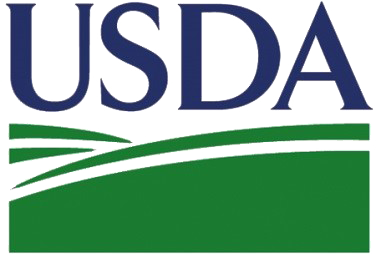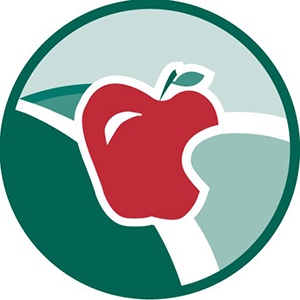Reducing School Food Waste
On September 16, 2015, the U.S. Department of Agriculture (USDA) and U.S. Environmental Protection Agency (EPA) announced the United States’ first-ever national food waste reduction goal, calling for a 50-percent reduction by 2030 (USDA News Release No. 0257.15).
In Louisiana, there are many points at which food loss and waste are generated, including in schools and households. Luckily, there are proven strategies that are simple and cost-effective to implement and can help reduce the amount of waste in school nutrition programs.
Best Practices for Child Nutrition Programs to Help Reduce School Food Waste

Healthy Kids, Not Healthy Trash Cans
The best way to tackle food waste is to make sure students consume what they take. USDA recommends "If a school has leftover food on a frequent basis, menu planning and production practices should be adjusted to reduce leftovers." (USDA Memo SP 11-2012) This involves good planning by school nutrition staff, getting students and families involved in decision-making, and educating students on the impacts of wasted food.
More Information

Visit the Institute of Child Nutrition Sharing Site to find resources that specifically address menu and recipe evaluation. The Child Nutrition Sharing Site (CNSS) is an online information center providing Child Nutrition Programs (CNPs) with a means for sharing effective resources related to program operation.
The Institute of Child Nutrition also hosts a Child Nutrition Recipe Box. The Recipe Box provides Child Nutrition Program operators with standardized recipes for meals that meet meal pattern requirements.

School meals programs should also routinely evaluate instances of leftovers/food and take action to reduce this occurrence. "As always, CNP operators should take steps to encourage consumption of the meal, including preparing appealing meals and serving them in a convenient manner. For example, CNP operators are encouraged to promote meal consumption by including an option of cut up whole fruit to make it easier to eat, and engaging children through taste tests, student advisory committees, and nutrition education. These practices help ensure children get the most out of the food assistance programs." (USDA Memo SP 41-2016)
The Louisiana Farm to School program’s taste test guide for students may be found on Page 27 in the Louisiana Harvest of the Month Toolkit.
Action for Healthy Kids has other resources on its Host a Taste Test page on how to engage your school community in selecting products and tasting recipes for you school nutrition program.
Batch Cooking is a great way to reduce food waste. Batch cooking means you cook less often. You can focus on fewer recipes and spend less time in the kitchen. Food is prepped or cooked in advance and then either heated or assembled to order streamlining and optimizing school meal systems.
Interested in learning more about the trends in School Meal Programs? The School Nutrition Association summarizes findings from a survey conducted with director-level SNA respondent members representing over 800 unique districts from all SNA regions in May and June, 2019 in a trends report. The School Nutrition Trends Report is completed each year.
Resources for Nutrition Integrity Goals to Reduce Food Waste


Offer Versus Serve



Menu Planning Flexibilities
Beginning July 1, 2019, updated school meals regulations allowed for menu planning flexibilities with regard to milk, whole grain and sodium requirements. The changes allow school meals program operators to plan menus that encourage the consumption of a variety of grains, fruits, vegetables, protein and low-fat dairy, while appealing to student tastes and reducing the incidence of discarded food.
The school meals proposed rule would continue to ensure children receive wholesome, tasty meals that provide the nutrition they need to grow and thrive, while offering increased flexibilities for local school districts to serve children food they will want to eat.

In January 2020, USDA released a proposed rule, "Simplifying Meal Service and Monitoring Requirements in the NSLP and SBP". The proposed rule would:
- Allow local schools to offer more vegetable varieties, while keeping plenty of veggies in each meal.
- Offer legumes as a meat alternate that could count toward the weekly legume requirement.
- Provide schools options to customize meal patterns to best serve children in different grades or smaller schools who eat together.
- Make it easier for schools to offer school lunch entrées for à la carte purchase, thereby reducing food waste.
- Support a more customized school breakfast environment by letting schools adjust fruit servings and making it simpler to offer meats/meat alternates, ultimately encouraging breakfast options outside the cafeteria so students can start their day with a healthy breakfast.
- Exempt SBP and NSLP entrées from the competitive food standards on the day the entrée is offered on the school menu and for two days after.
- Expand the flexibility for the sale of calorie-free, naturally flavored waters during the school day.
- Shift to a performance-focused administrative review process that is less burdensome and time consuming, which would increase collaboration with operators to improve program integrity.
Share Table Toolkit for Schools
Share Tables
A share table is a place where students can place unopened food and drinks that they choose not to eat or drink. Students drop off unwanted food and drink on the Share Table immediately after leaving the serving line.

Louisiana Administrative Code, Title 51, Part XXIII, Chapter 19
§1909. Reservice [formerly paragraph 22:12-5] A. Once served to a consumer, portions of left-over food shall not be reserved, except: 1. food that is not potentially hazardous, such as crackers and condiments, in an unopened original package and maintained in sound condition may be reserved or resold; 2. food that is dispensed so that it is protected from contamination and the container is closed between uses, such as a narrow-neck bottle containing catsup, steak sauce, or wine.

However, in an attempt to assist with controlling food waste, the Louisiana Department of Health (LDH) has indicated that child nutrition program operators who wish to institute a share table at a school may submit a proposed plan to LDH for review and possible grant of a variance.

When it comes to share tables, it is imperative that proper food safety and food handling procedures are followed and that School Food Authorities work closely with parish sanitarians to make sure an approved sharing plan is in place. Allowing share tables may, in a controlled manner, reduce food waste and allow additional nutrition opportunities for children.
Louisiana Share Table Guidelines

SFA applicants will need to submit a variance request and identify the parameters under which they will conduct the share tables. Submit your requests to the local LDH Environmental Health Sanitarian Services Office in your parish. In order for consideration of the variance, the plan must include the following information from the Guide to Share Tables from the Louisiana Department of Health.
Louisiana School Food Share Table Request Form
Example Share Table Request Form
How are Louisiana Schools Helping to Reduce Food Waste?

Learn more about the New Share Carts in Calcasieu Parish Schools. These share carts at LeBleu Settlement Elementary School are a fun and effective way of reducing food waste and minimizing childhood hunger.
Reducing Food Waste Resources
Meal Planning Flexibilities Resources

|
SNA Comments on Proposed School Meal Flexibilities |

|
USDA Regulatory Reform at a Glance Proposed Rule: School Meals Flexibilities |








